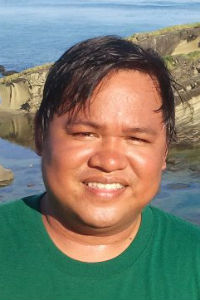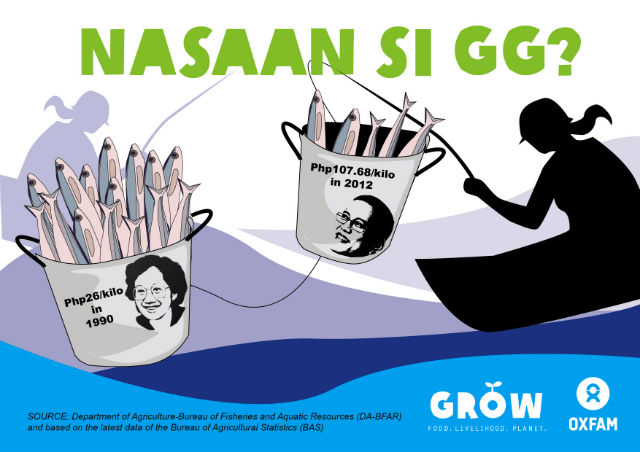SUMMARY
This is AI generated summarization, which may have errors. For context, always refer to the full article.
 From the Martial Law years up to the restoration of democracy in the country, galunggong, or “GG” as it is colloquially referred to, was a symbol of poverty. President Corazon Aquino often used the lowly GG to emphasize the growing poverty in the country. The irony is that, 27 years after, under the administration of her son Benigno Aquino III, galunggong—a regular part of the diet of poor families—has become inaccessible to the common tao.
From the Martial Law years up to the restoration of democracy in the country, galunggong, or “GG” as it is colloquially referred to, was a symbol of poverty. President Corazon Aquino often used the lowly GG to emphasize the growing poverty in the country. The irony is that, 27 years after, under the administration of her son Benigno Aquino III, galunggong—a regular part of the diet of poor families—has become inaccessible to the common tao.
According to the Department of Agriculture-Bureau of Fisheries and Aquatic Resources (DA-BFAR), and based on the latest data of the Bureau of Agricultural Statistics (BAS), national galunggong output in 2012 declined to 166,000 metric tons as compared to 172,000 metric tons in 2011. Its price has skyrocketed from P26 per kilo in 1990 to P107.68 per kilo in 2012.
For the past several years, there have been reports that the galunggong you find in markets today comes mainly from China and Taiwan.
It’s not just GG that’s in decline—overall total fisheries production is generally down; the share of the fisheries sub-sector to total agricultural production is down by 0.04 percent in 2012, due to a 3.9 percent decline in municipal fish catch. In 2006, the results of the National Stock Assessment Program (NSAP) of the DA-BFAR showed that 10 out of the 13 fishing grounds in the Philippines were already heavily exploited. This means that we have too many fisherfolks with very few fish to catch. We are fishing ourselves out of business.
Ten to twenty years from now, we may run out of fish. And no one seems to be alarmed enough to be take action.

The sorry state of the country’s marine resources puts our primary fish producers at a losing end. Fisherfolk are considered to be the poorest of the poor, with more than 50 percent poverty incidence found in fishing communities. Wage and salary workers in the fishing industry earn a daily income of P169.43 compared to the average daily income of a wage and salary earner which is P326.93.
Cases of displacement of fisherfolk due to commercialization and privatization of coastal resources are piling up. Areas that are traditionally used as seaweed- and fish-drying by women fisherfolk are giving way to private beach resorts. Abandoned fishponds remain idle because there are no policy guidelines to revert them to mangroves and once again become productive.
But hope is not lost. The key is in managing our fishing capacities and stricter implementation, with focus on four important points:
Balance, not blasting. Reducing and maintaining fishing efforts at sustainable levels is one step. This can be complemented by regulating fishing gear and banning efficient but destructive methods.
Go fish, no fish. Allocating 15 percent of municipal waters as no-take zones will help in taking pressure away from marine resources and replenishing fish stocks. This strategy has been tried and tested under the Community-Based Coastal Resources Management.
Proper staffing. Something also needs to be done about the weak capacity of DA-BFAR to enforce fishery laws—a severely understaffed officed that is expected to manage waters surrounding more than 7,100 islands.
Net (no pun intended) department. It may be wise to consider establishing a Department of Fisheries and Aquatic Resources that will oversee all functions related to fisheries management. There are many good laws, including the Philippine Fisheries Code of 1998. An umbrella department is vital in the implementation and safeguarding of these laws.
Then maybe, just maybe, we won’t have to say goodbye to galunggong. – Rappler.com
Dennis F. Calvan is the Executive Director NGOs for Fisheries Reform, Inc., a coalition of organizations working with the fisheries sector.
This article is part of the Growing A Better Future Opinion Series–an Oxfam campaign for better ways to grow, share and live together. It’s a campaign for the billions who eat food and over a billion of men and women who grow it, to share solutions for a more hopeful future in which everyone always has enough to eat. May 31 is National Fisherfolk Day.
Oxfam is an international confederation of 17 organisations networked together in more than 94 countries, as part of a global movement for change, to build a future free from the injustice of poverty. In the Philippines, Oxfam works with poor people to sustain their livelihoods, and reduce their risks to natural and human-made disasters and climate change impacts. Oxfam strives to enable poor people to have a voice in economic issues affecting them. Oxfam also supports poor women as they lead in transforming unequal social and economic relations.
Add a comment
How does this make you feel?





There are no comments yet. Add your comment to start the conversation.